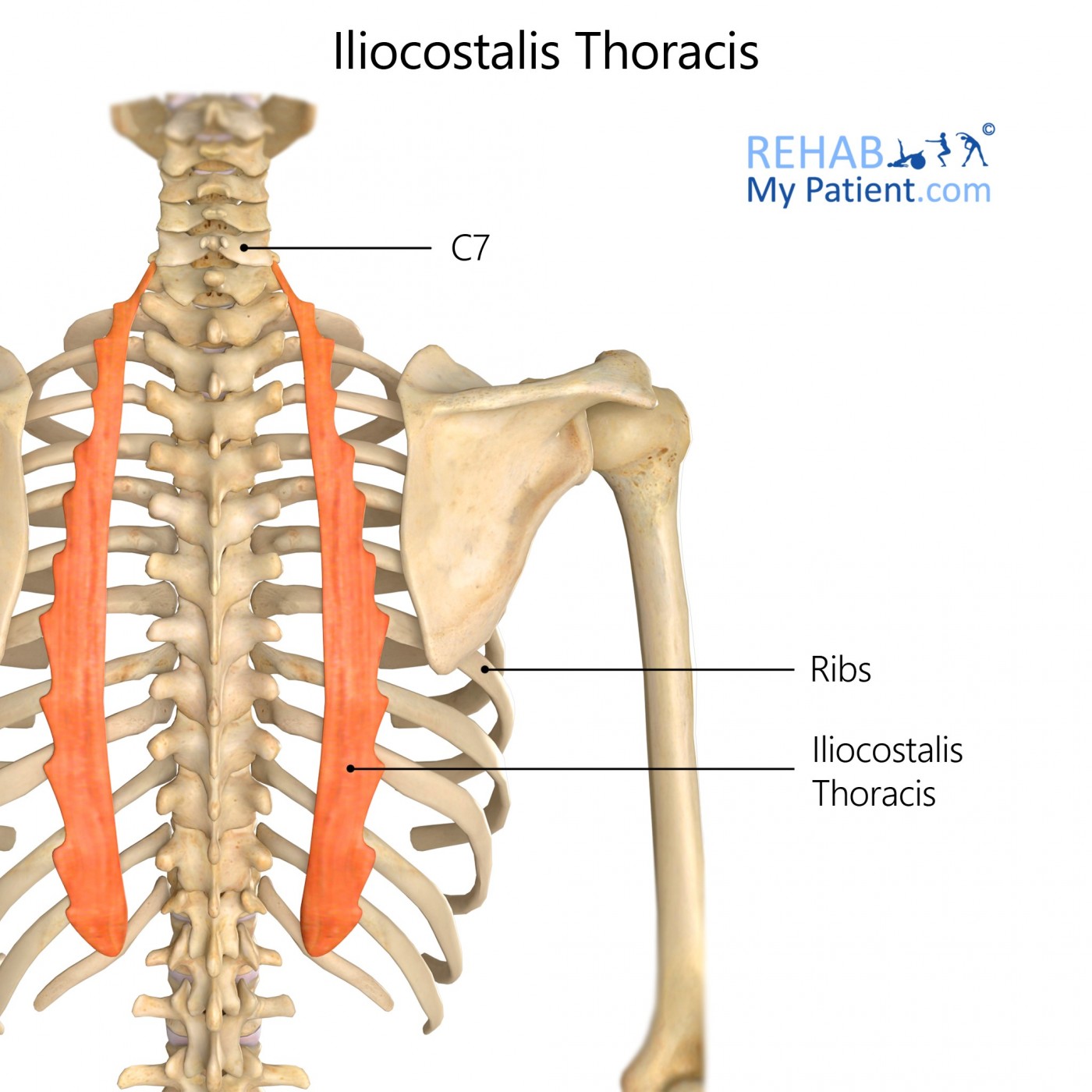
General information
Iliocostalis is a dorsal muscle situated deep to the fleshy section of serratus anterior. Iliocostalis thoracis is the upper (thoracic) portion of that muscle.
Literal meaning
The muscle between the ribs and the groin.
Interesting information
Iliocostalis thoracis constitutes part of the erector spinae muscle group. The three major muscles of erector spinae are iliocostalis, longissimus, and spinalis. All three of these muscles are critical for proper spine movement. Iliocostalis thoracis is activated when you bend your back, rotate your spine, straighten your back, and shift your pelvis.
Injury or dysfunction in iliocostalis thoracis may be indicated by pain in the upper back near the shoulder blades, chest pain, or more rarely pain in the upper abdominal region away from the midline. Strain of this muscle is often experienced after attempting to lift something considerably heavy or rotating the spine while lifting an object.
Although hyperkyphosis (excessive anterior curvature of the upper spine) is more commonly caused by osteoporosis, it can also be caused by trauma to the back which results in lingering damage to the back muscles, including iliocostalis thoracis. If hyperkyphosis occurs post-trauma, it may be amended using targeted physical therapy.
Origin
Base of ribs 7 to 12.
Insertion
Posterior tubercle of cervical vertebrae 7 and posterior surface of ribs 1 to 6.
Function
Posture stabilization; bends or rotates the back to one side; shifts the pelvis from side to side.
Nerve supply
Dorsal rami of T7 to L3.
Blood supply
Lumbar arteries and lateral sacral artery.

Relevant research
Chronic back pain is a common complaint, particularly among people who are required to sit in an office chair for hours at a time. New ergonomic chair designs attempt to decrease back muscle activation while sitting in order to reduce muscle fatigue and resulting pain.
O'Sullivan K, McCarthy R, White A, O'Sullivan L, Dankaerts W. (2012). “Lumbar posture and trunk muscle activation during a typing task when sitting on a novel dynamic ergonomic chair”. Ergonomics. 55(12):1586-95.
Electromyographical study of the back muscles allows researchers to record measurements of specific muscle activation while performing a number of tasks including extending, flexing, and rotating the back. These measurements can then be used to assess the appropriateness of different stretches and exercises for physiotherapy involving the back.
Bankoff AD, Moraes AC, Salve MG, Lopes MB, Ferrarezi MP (2000). “Electromyographical study of the iliocostalis lumborum, longissimus thoracis and spinalis thoracis muscles in various positions and movements”. Electromyogr Clin Neurophysiol. 40(6):345-9.
Iliocostalis thoracis exercises
Sign Up
Sign up for your free trial now!
Get started with Rehab My Patient today and revolutionize your exercise prescription process for effective rehabilitation.
Start Your 14-Day Free Trial